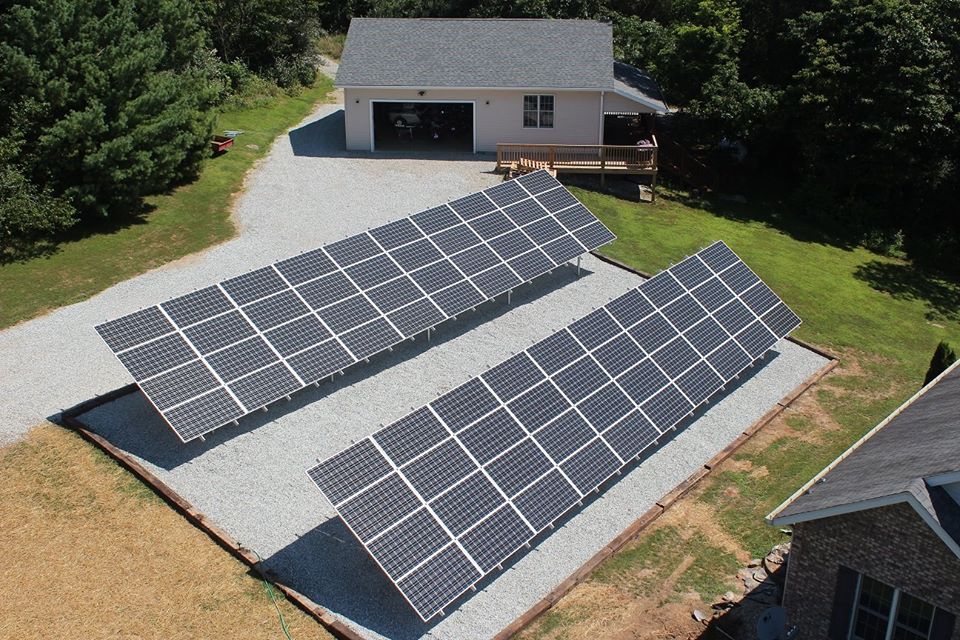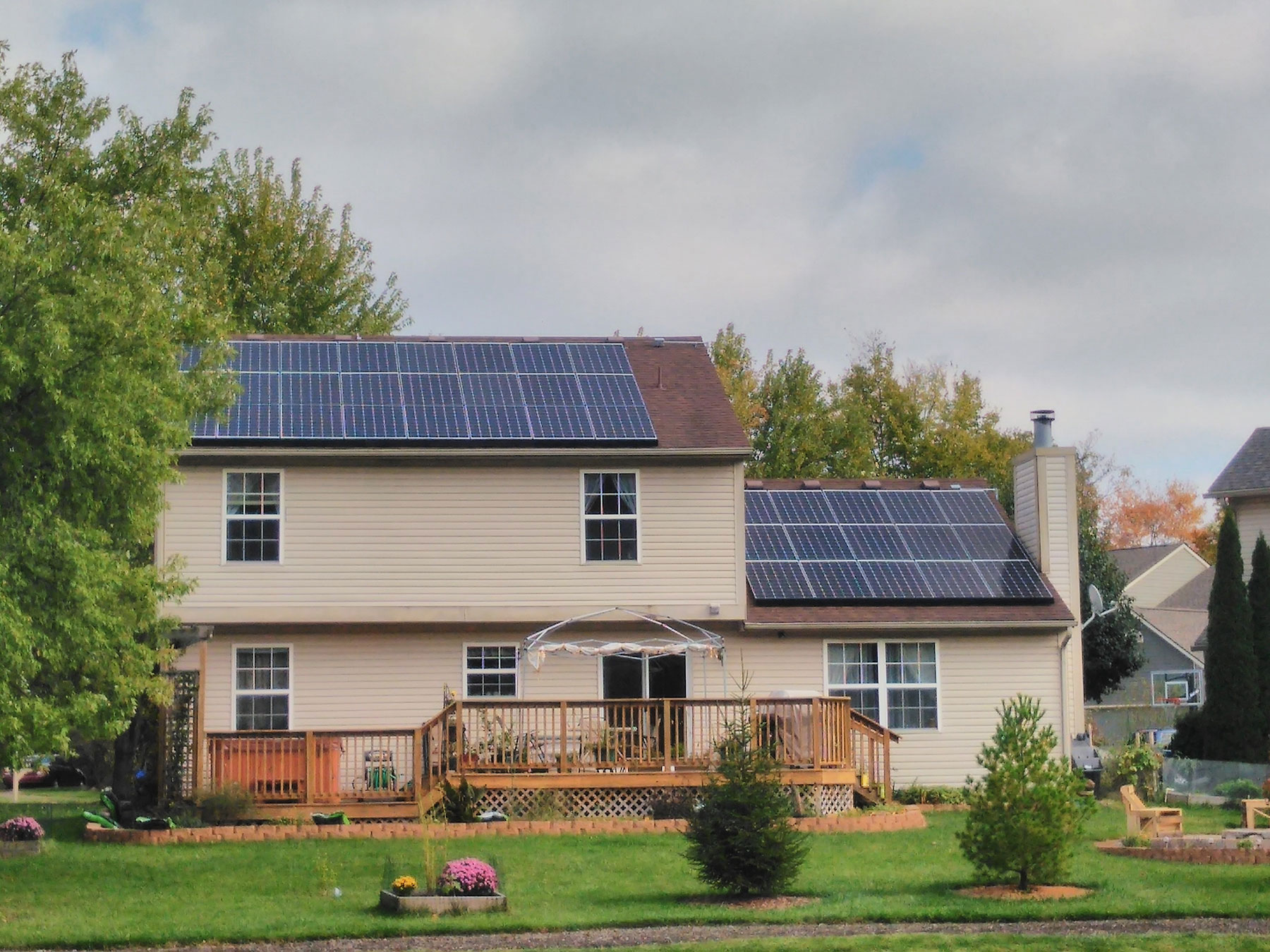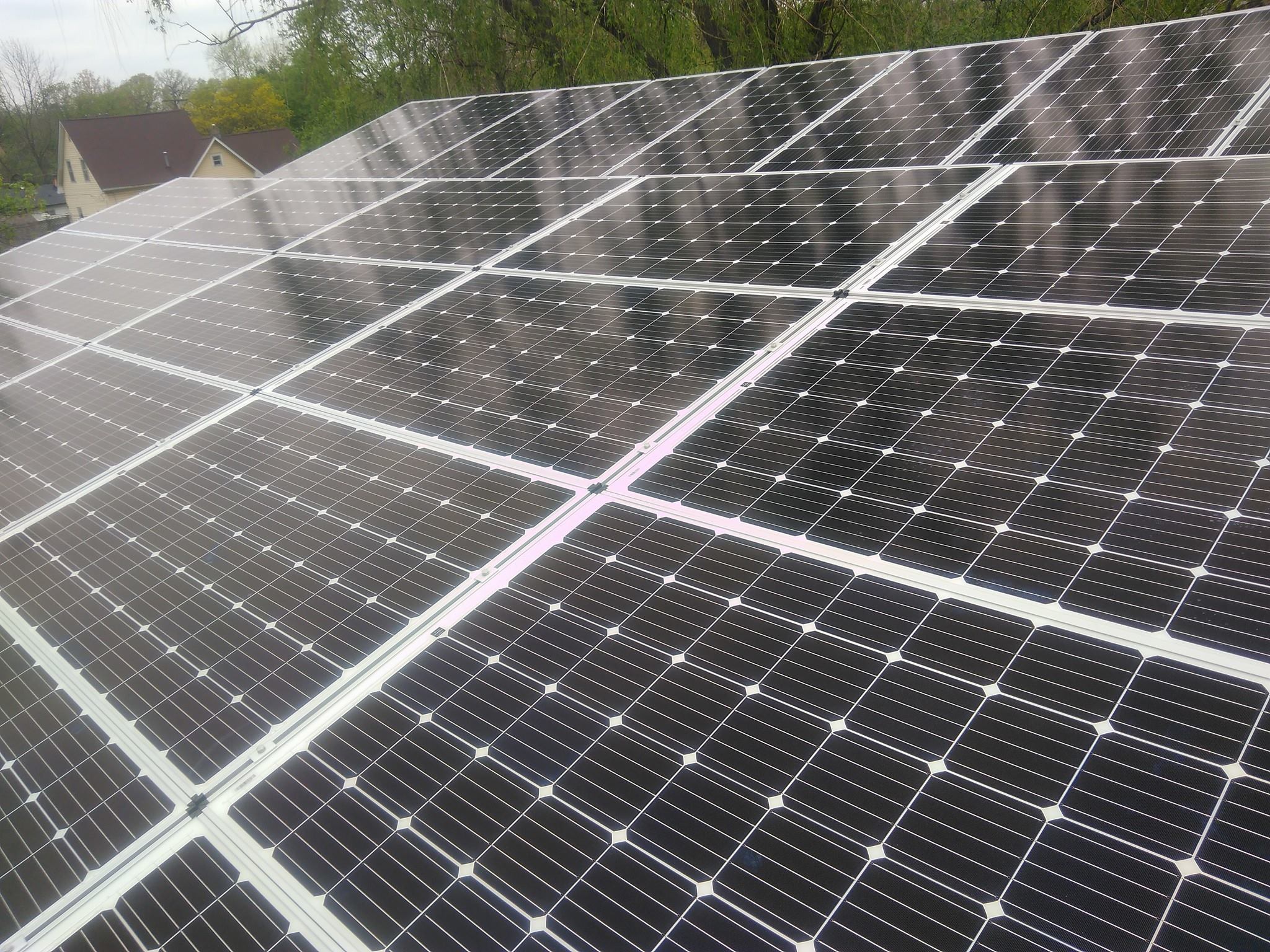A standard, fixed-tilt ground-mounted solar system, like pictured below, is ideal when you have an unshaded, unobstructed area of land that you do not mind losing for farming energy.
Standard installation methods require heavy machinery to drill 12-inch to 24-inch holes into the ground 6 – 10 ft deep and fill those holes with concrete and a steel beam! The vertical beams can be cut to length to create a chosen tilt towards the sun. A horizontal steel beam is added on top of the vertical beams, and then typical racking and modules are installed.
Your soil type, wind forces, and location may determine the different mounting and securing methods that are necessary to hold down your ground-mounted solar array. Ground screws, concrete slabs, or ballast blocks or any combination of the list, are all acceptable possibilities. The main objective is to provide a mechanical means to keep your modules in place, and enough weight to prevent them from flying away. Racking manufacturers have structural engineers on staff to help our Design Professionals create a system that meets your site-specific needs to ensure the solar system is safe and secure.
Costs
Ground-mounted arrays typically cost more to install as they require extra materials and labor. The cement foundation and the reinforced pole structure will make sure the arrays are lifted off the ground, at the appropriate tilt angle, and additional wires are needed to be trenched to the house. All these additional materials and the labor associated with installing them, amount to higher costs than roof-top solar.
Space
For larger properties with a lot of unused space, the property owner can install a much larger solar system since ground-mounted systems are not bound by size limits like roof-mounted systems are. This gives the homeowner an opportunity to generate much more energy thus saving on their utility bills even further. Nonetheless, such systems typically consume a lot of space. Any ground-mounted array typically consumes more space than a roof-based panel, which might be an issue if you have limited space.
Aesthetics
A ground-mounted array typically sits between a few inches and a couple of feet off the ground. This depends on your location and the type of mounting system you are utilizing. For instance, if you have a small space in your property then you install a big system, the arrays will be more conspicuous than they would have been on a rooftop. As such, your solar system will be quite a distraction to your home’s aesthetics if your space is not large enough.
Positioning
The most ideal position for a solar panel system is to face towards the West or South, with southeast and southwest alignments being the other possible alternatives. Ground-mounted systems allow you to orient the system more easily. You will not have to deal with the obstructions that roof panels have to deal with. As such, you will be able to ensure that your arrays are facing the right direction and at the right angle. This means your potential to generate energy will not be limited. Many people are intrigued by tracking systems due to their boost in production. However, tracking systems are more suitable for industrial/utility-scale applications. It is far easier and less costly to install, maintain and expand a fixed tilt solar system, than a tracking system.
Due to increased air circulation and lower operating temperatures, ground-mounted panels typically produce more power and energy than roof-top solar systems.
Ballasted Roof and Ground Options
Ballasted racking installations are a great solution for commercial flat roof designs. Using blocks, wind fairings, and an interlocking design; these installations typically do not require any penetrations and are fast to install.
This ballasted ground mount racking solution is a modified version of the commercial flat roof design to allow additional space beneath the solar modules to allow access to trim the underlying grass. A landscape cloth or rock barrier can also be put down to provide weed protection.
This type of ground mount has the benefits of eliminating the need for heavy machinery to drill the large holes and the associated poles and concrete for the traditional ground-mounted solar system. A combination of ground screws and ballast blocks are used to secure the array.
The drawbacks to this type of installation are that its tilt angle is fixed at 15-20 degrees. This is to prevent massive amounts of weight (concrete) and/or mechanical methods to offset wind forces. This system also requires more space than a rooftop system or standard ground mount. However, if you have plenty of unused green space, it is a highly effective low-cost ground-mounted solution.
Working with a professional to discuss these options is a critical part of understanding what the best solution is for solar at your property. An energy advisor can walk you through a proper strategy, explain the pros and cons of each type of installation, and relay the costs associated with each option.





